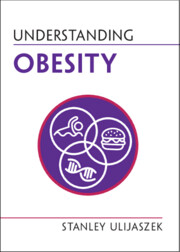851 results
5 - A Cognitive Revolution
-
- Book:
- The Archaeology of Southern Africa
- Published online:
- 15 May 2024
- Print publication:
- 06 June 2024, pp 85-124
-
- Chapter
- Export citation
Chapter 17 - Genetics of Mood Disorders
-
-
- Book:
- Clinical Textbook of Mood Disorders
- Published online:
- 16 May 2024
- Print publication:
- 23 May 2024, pp 172-177
-
- Chapter
- Export citation
Genomics and insurance in the United Kingdom: increasing complexity and emerging challenges
-
- Journal:
- Health Economics, Policy and Law , First View
- Published online by Cambridge University Press:
- 16 May 2024, pp. 1-13
-
- Article
-
- You have access
- Open access
- HTML
- Export citation
Genetic and Environmental Influences on Perceived Stress in South Korean Twins
-
- Journal:
- Twin Research and Human Genetics , First View
- Published online by Cambridge University Press:
- 03 May 2024, pp. 1-6
-
- Article
-
- You have access
- Open access
- HTML
- Export citation
TwinsMX: Exploring the Genetic and Environmental Influences on Health Traits in the Mexican Population
-
- Journal:
- Twin Research and Human Genetics / Volume 27 / Issue 2 / April 2024
- Published online by Cambridge University Press:
- 03 May 2024, pp. 85-96
-
- Article
-
- You have access
- Open access
- HTML
- Export citation
Chapter 3.2 - Causes of Depression
-
-
- Book:
- Seminars in General Adult Psychiatry
- Published online:
- 04 April 2024
- Print publication:
- 18 April 2024, pp 89-107
-
- Chapter
- Export citation
Chapter 5.2 - Causes and Outcome of Psychosis
-
-
- Book:
- Seminars in General Adult Psychiatry
- Published online:
- 04 April 2024
- Print publication:
- 18 April 2024, pp 224-240
-
- Chapter
- Export citation
Chapter 10 - Attention-Deficit/Hyperactivity Disorder
-
-
- Book:
- Seminars in General Adult Psychiatry
- Published online:
- 04 April 2024
- Print publication:
- 18 April 2024, pp 539-545
-
- Chapter
- Export citation
Hunter–gatherer genetics research: Importance and avenues
-
- Journal:
- Evolutionary Human Sciences / Volume 6 / 2024
- Published online by Cambridge University Press:
- 15 February 2024, e15
-
- Article
-
- You have access
- Open access
- HTML
- Export citation
Interplay of polygenic liability with birth-related, somatic, and psychosocial factors in anorexia nervosa risk: a nationwide study
-
- Journal:
- Psychological Medicine , First View
- Published online by Cambridge University Press:
- 13 February 2024, pp. 1-14
-
- Article
-
- You have access
- Open access
- HTML
- Export citation
The nature of nurture: Darwinian and mendelian perspectives
-
- Journal:
- Development and Psychopathology , First View
- Published online by Cambridge University Press:
- 13 February 2024, pp. 1-10
-
- Article
-
- You have access
- Open access
- HTML
- Export citation
Chapter 18 - Anxiety Disorders
-
-
- Book:
- Mental Health Research and Practice
- Published online:
- 01 February 2024
- Print publication:
- 08 February 2024, pp 317-340
-
- Chapter
- Export citation
Family History of Twinning and Fertility Traits in Nigerian Mothers of Dizygotic Twins
-
- Journal:
- Twin Research and Human Genetics / Volume 27 / Issue 1 / February 2024
- Published online by Cambridge University Press:
- 31 January 2024, pp. 12-17
-
- Article
-
- You have access
- Open access
- HTML
- Export citation
2 - It’s My Genes
-
- Book:
- Understanding Obesity
- Published online:
- 04 January 2024
- Print publication:
- 25 January 2024, pp 17-31
-
- Chapter
- Export citation
Novel recruitment approaches and operational results for a statewide population Cohort for cancer research: The Healthy Oregon Project
-
- Journal:
- Journal of Clinical and Translational Science / Volume 8 / Issue 1 / 2024
- Published online by Cambridge University Press:
- 19 January 2024, e32
-
- Article
-
- You have access
- Open access
- HTML
- Export citation
Working Ethically with Ancient DNA from Composites in the United States
-
- Journal:
- Advances in Archaeological Practice , First View
- Published online by Cambridge University Press:
- 15 January 2024, pp. 1-12
-
- Article
-
- You have access
- Open access
- HTML
- Export citation

Understanding Obesity
-
- Published online:
- 04 January 2024
- Print publication:
- 25 January 2024
Retrospective Analysis of Canadian Adults with Tuberous Sclerosis Complex
-
- Journal:
- Canadian Journal of Neurological Sciences , First View
- Published online by Cambridge University Press:
- 27 December 2023, pp. 1-8
-
- Article
-
- You have access
- Open access
- HTML
- Export citation
6 Exercise Induced Growth Factor Increases Directly and Indirectly Reduce Systemic Vascular Risk Parameters: Translational Project Amongst Midlife Human and Animal Models of Preclinical Alzheimer’s disease and Vascular Dementia
-
- Journal:
- Journal of the International Neuropsychological Society / Volume 29 / Issue s1 / November 2023
- Published online by Cambridge University Press:
- 21 December 2023, pp. 218-219
-
- Article
-
- You have access
- Export citation
40 APOE x BDNF Genetic Interaction is Associated with Poorer Cognitive Outcomes in Veterans with Histories of mTBI
-
- Journal:
- Journal of the International Neuropsychological Society / Volume 29 / Issue s1 / November 2023
- Published online by Cambridge University Press:
- 21 December 2023, pp. 147-148
-
- Article
-
- You have access
- Export citation



